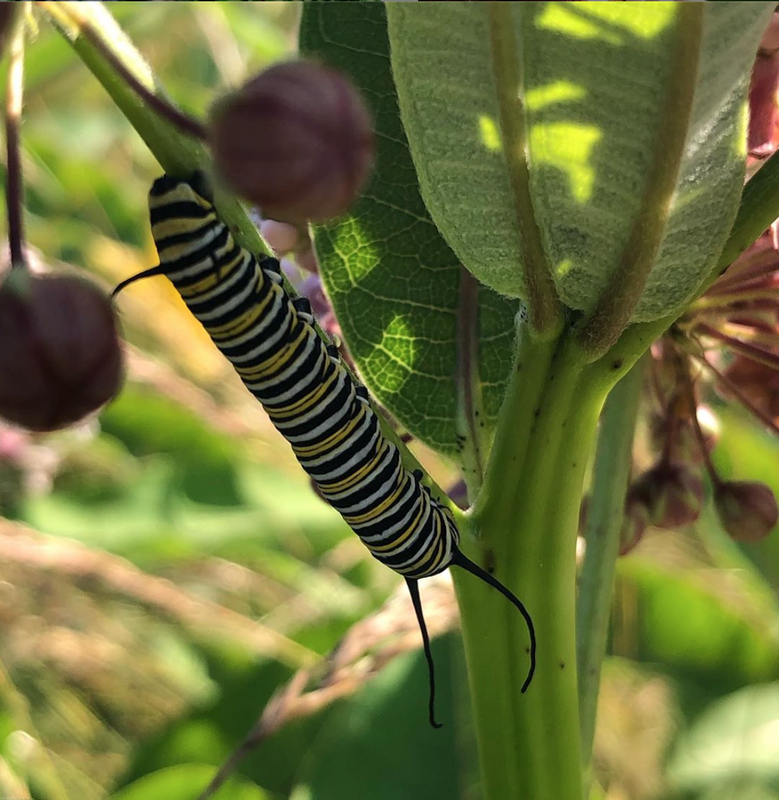|
As a child, I remember a large milkweed field in Hampton that we would walk thru each day on our way to Marston School. In the early Fall, the field would be full of milkweed and also monarch butterflies that were making their migratory trip to Mexico from New England. Milkweed plants would have butterflies on them as they fed on the gooey white sap that the milkweed plants produced. That beautiful field on Mill Road now has a large home in the middle of it and maybe a few milkweed plants here and there but I am betting it doesn't have a tenth of the milkweed plants it did when it was a meadow.
Milkweed is a critical plant to monarchs since it is one of their primary food sources and provides homes for the monarch in the summer. Adult monarchs will lay eggs on the underside of the leathery leaves of the milkweed plant, where they will hatch into a caterpillar and feed on the plant. The caterpillar will then form a cocoon on the plant and hatch into a butterfly which will feed on the blossoms and subsequent milkweed pods that develop from them. Milkweed blossoms are also large nectar producers and are worked by other pollinators including honey bees that will risk becoming entrapped by the sticky resin the plant produces to collect the nectar. Honey bees love milkweed as do many other native pollinators. We have worked with many landowners to plant milkweed fields or help expand their current fields. On Goss Farm in Rye, NH we protected one plant from mowing years ago and it has now developed into a small patch of around 50 plants. Once the milkweed gets established it will expand underground via rhizomes and it can quickly overtake gardens if you don't manage it. I put a few plants in one of our gardens and it has taken over the space. However, after one season we had monarch butterflies visiting and nesting on the stalks. It is an incredible sight to see. Another way to plant a milkweed field is to collect the dried pods and stalks from existing plants. Joe Tucker and I collected plants from a large milkweed field in North Hampton thanks to the property owner Greg's permission. Greg's field was a horse paddock about ten years ago and he nursed the field back to a wildflower pollinator habitat where milkweed spread from a few plants to many over a few years. Greg's field was the largest field of milkweed I had seen since that field off Mill Road in Hampton. Joe and I cut the stalks with their pods on a November day and brought them over to a section of his pollinator habitat in Rye. We used a rod to punch holes into the ground and placed a stalk into each hole about 8 or so feet apart. That winter the pods would release the silken seeds that would float down into the 8-acre field. The next spring season we saw milkweed plants starting to take root. After a year we had numerous milkweed plants spread throughout the pollinator habitat and the monarchs showed up once the plants were established. This last year we had hundreds of monarchs flying in the field in the middle of the summer and have countless more stopping to feed on the milkweed during the migration in the fall. Would you like to have help setting up a milkweed field? Feel free to contact us at [email protected] to learn more.
0 Comments
|
Details
SEABEE HONEY BLOGAuthorA beekeeper in New Hampshire [email protected] Archives
December 2023
Categories
All
|


 RSS Feed
RSS Feed